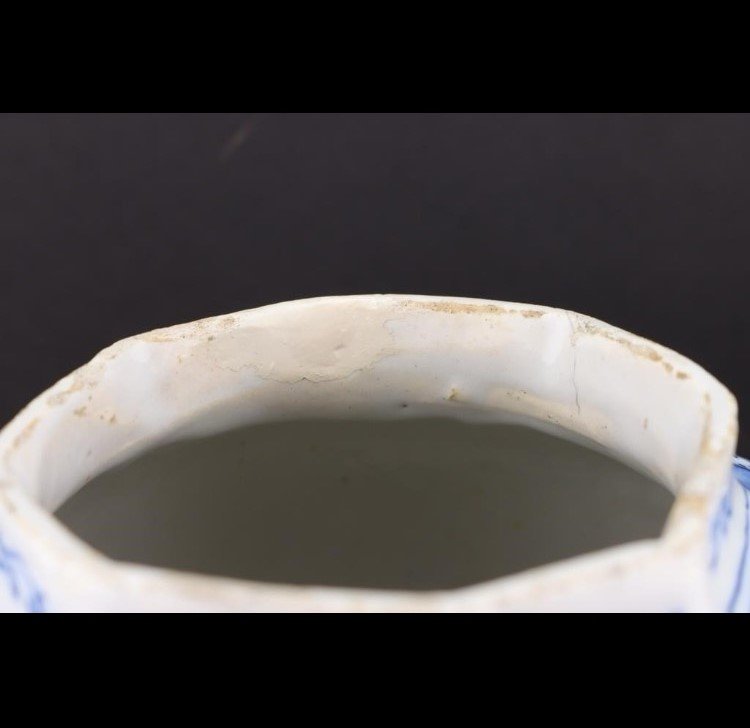Lot of 3 Pre-Columbian Pottery Standing Figures
This exceptional trio of Pre-Columbian pottery Venus or 'pretty lady' figures represents distinct cultures and time periods from ancient Latin America, dating from ca. 1200-800 BCE. The collection includes a Chupicuaro figure from Mexico and two Bahia figures from Ecuador, showcasing the rich diversity and artistic evolution of these ancient civilizations.
The figure on the left is a Chupicuaro figure from Mexico, characterized by its highly stylized anthropomorphic depiction, featuring curved arms, rounded breasts, and double pupils impressed into each applied eye. This piece highlights the cultural emphasis on fertility and femininity in Chupicuaro society.
The middle figure is a Bahia figure from Ecuador, adorned with three concentric necklaces, a ring-adorned nose, spherical pellets near both ears, and layers of red and orange slip pigment. This elaborate adornment showcases the intricate artistry and cultural practices of the Bahia people.
The figure on the right is another Bahia figure from Ecuador, notable for its minimalist representation with attenuated limbs, a bulbous nose, and applied eyes with horizontal pupils. This piece exudes a primitive charm, capturing the essence of early Bahia artistry.
Provenance:
Dr. Peter Arnovick Estate, California, USA
Private Fort Lauderdale, Florida, USA collection
Ex-Minerva Gallery
Ex-Benjamin Vega, California, USA, acquired in 2006-2007
Ex-Gene and Virginia George, brought to the USA from 1961-1966
Sold again in 2020
Purchased by Martin's Timeless Vault LLC in 2024
This fine gathering of Pre-Columbian Venus figures offers a captivating glimpse into the ancient artistry and cultural practices of Chupicuaro and Bahia civilizations. Each piece, with its unique features and historical significance, contributes to a rich narrative of the artistic legacy of these ancient cultures.
This exceptional trio of Pre-Columbian pottery Venus or 'pretty lady' figures represents distinct cultures and time periods from ancient Latin America, dating from ca. 1200-800 BCE. The collection includes a Chupicuaro figure from Mexico and two Bahia figures from Ecuador, showcasing the rich diversity and artistic evolution of these ancient civilizations.
The figure on the left is a Chupicuaro figure from Mexico, characterized by its highly stylized anthropomorphic depiction, featuring curved arms, rounded breasts, and double pupils impressed into each applied eye. This piece highlights the cultural emphasis on fertility and femininity in Chupicuaro society.
The middle figure is a Bahia figure from Ecuador, adorned with three concentric necklaces, a ring-adorned nose, spherical pellets near both ears, and layers of red and orange slip pigment. This elaborate adornment showcases the intricate artistry and cultural practices of the Bahia people.
The figure on the right is another Bahia figure from Ecuador, notable for its minimalist representation with attenuated limbs, a bulbous nose, and applied eyes with horizontal pupils. This piece exudes a primitive charm, capturing the essence of early Bahia artistry.
Provenance:
Dr. Peter Arnovick Estate, California, USA
Private Fort Lauderdale, Florida, USA collection
Ex-Minerva Gallery
Ex-Benjamin Vega, California, USA, acquired in 2006-2007
Ex-Gene and Virginia George, brought to the USA from 1961-1966
Sold again in 2020
Purchased by Martin's Timeless Vault LLC in 2024
This fine gathering of Pre-Columbian Venus figures offers a captivating glimpse into the ancient artistry and cultural practices of Chupicuaro and Bahia civilizations. Each piece, with its unique features and historical significance, contributes to a rich narrative of the artistic legacy of these ancient cultures.
This exceptional trio of Pre-Columbian pottery Venus or 'pretty lady' figures represents distinct cultures and time periods from ancient Latin America, dating from ca. 1200-800 BCE. The collection includes a Chupicuaro figure from Mexico and two Bahia figures from Ecuador, showcasing the rich diversity and artistic evolution of these ancient civilizations.
The figure on the left is a Chupicuaro figure from Mexico, characterized by its highly stylized anthropomorphic depiction, featuring curved arms, rounded breasts, and double pupils impressed into each applied eye. This piece highlights the cultural emphasis on fertility and femininity in Chupicuaro society.
The middle figure is a Bahia figure from Ecuador, adorned with three concentric necklaces, a ring-adorned nose, spherical pellets near both ears, and layers of red and orange slip pigment. This elaborate adornment showcases the intricate artistry and cultural practices of the Bahia people.
The figure on the right is another Bahia figure from Ecuador, notable for its minimalist representation with attenuated limbs, a bulbous nose, and applied eyes with horizontal pupils. This piece exudes a primitive charm, capturing the essence of early Bahia artistry.
Provenance:
Dr. Peter Arnovick Estate, California, USA
Private Fort Lauderdale, Florida, USA collection
Ex-Minerva Gallery
Ex-Benjamin Vega, California, USA, acquired in 2006-2007
Ex-Gene and Virginia George, brought to the USA from 1961-1966
Sold again in 2020
Purchased by Martin's Timeless Vault LLC in 2024
This fine gathering of Pre-Columbian Venus figures offers a captivating glimpse into the ancient artistry and cultural practices of Chupicuaro and Bahia civilizations. Each piece, with its unique features and historical significance, contributes to a rich narrative of the artistic legacy of these ancient cultures.
Category: Pre-Columbian - Figural
Country of Origin: Valley of Mexico, Ecuador
In House Collection: 1 of 6
Condition: VG
Condition Additional Notes: Largest figure repaired from two large pieces at waist, and double-pupil figure has restoration to left leg, each with resurfacing and overpainting along new material and break lines. All figures have abrasions and encrustations to faces and bodies, with light fading to original pigment, and softening to some finer details. Nice earthen deposits throughout.
Material: Pottery
Age: ca. 1200-800 BCE
Size: The larger one is 3.25" tall












































